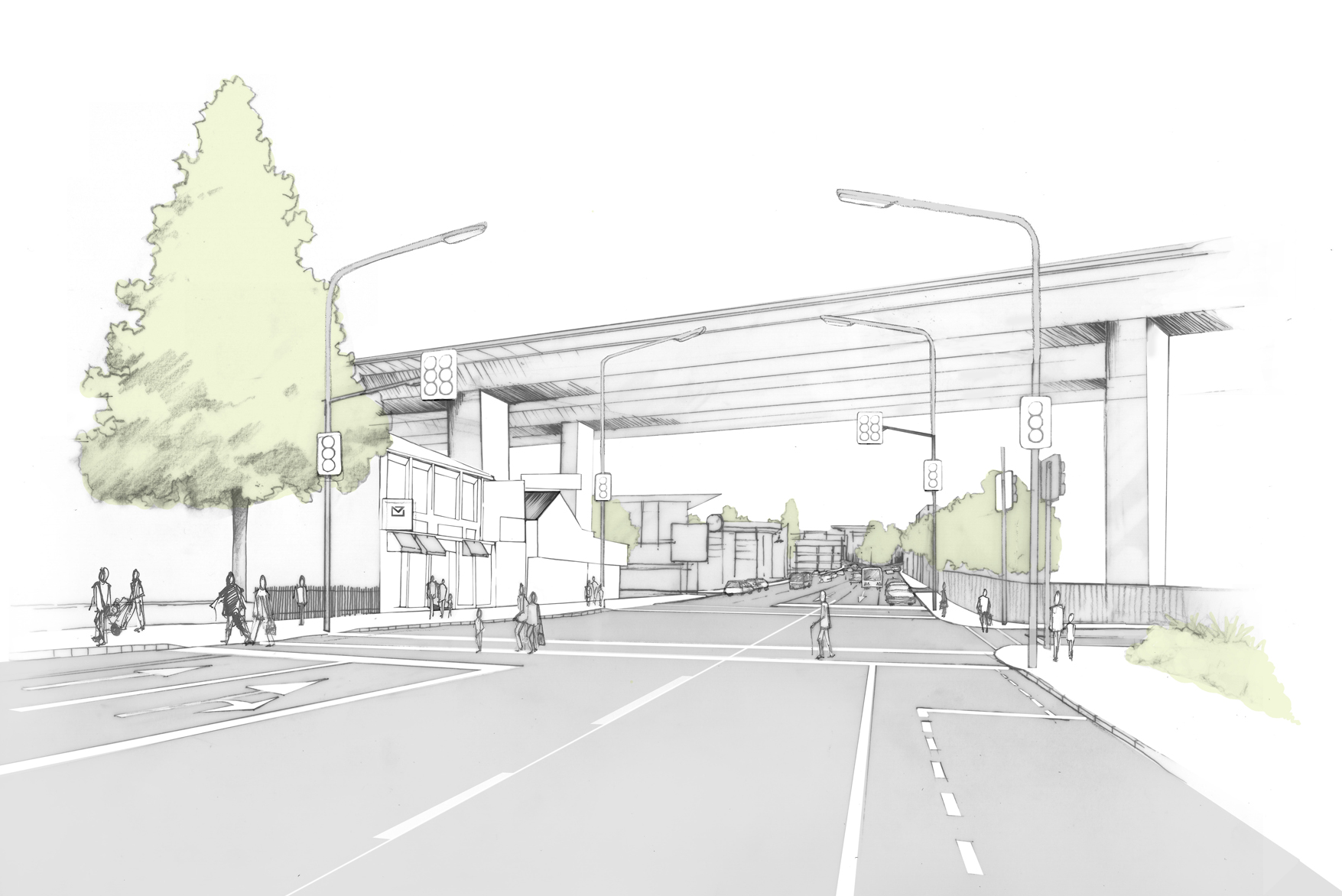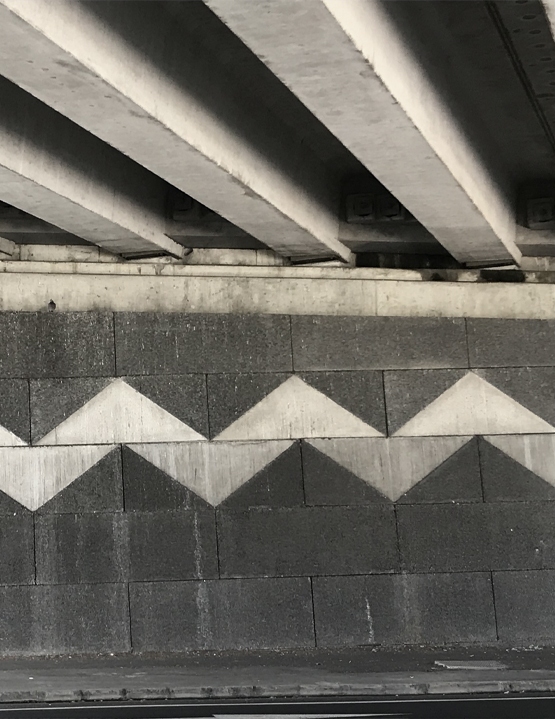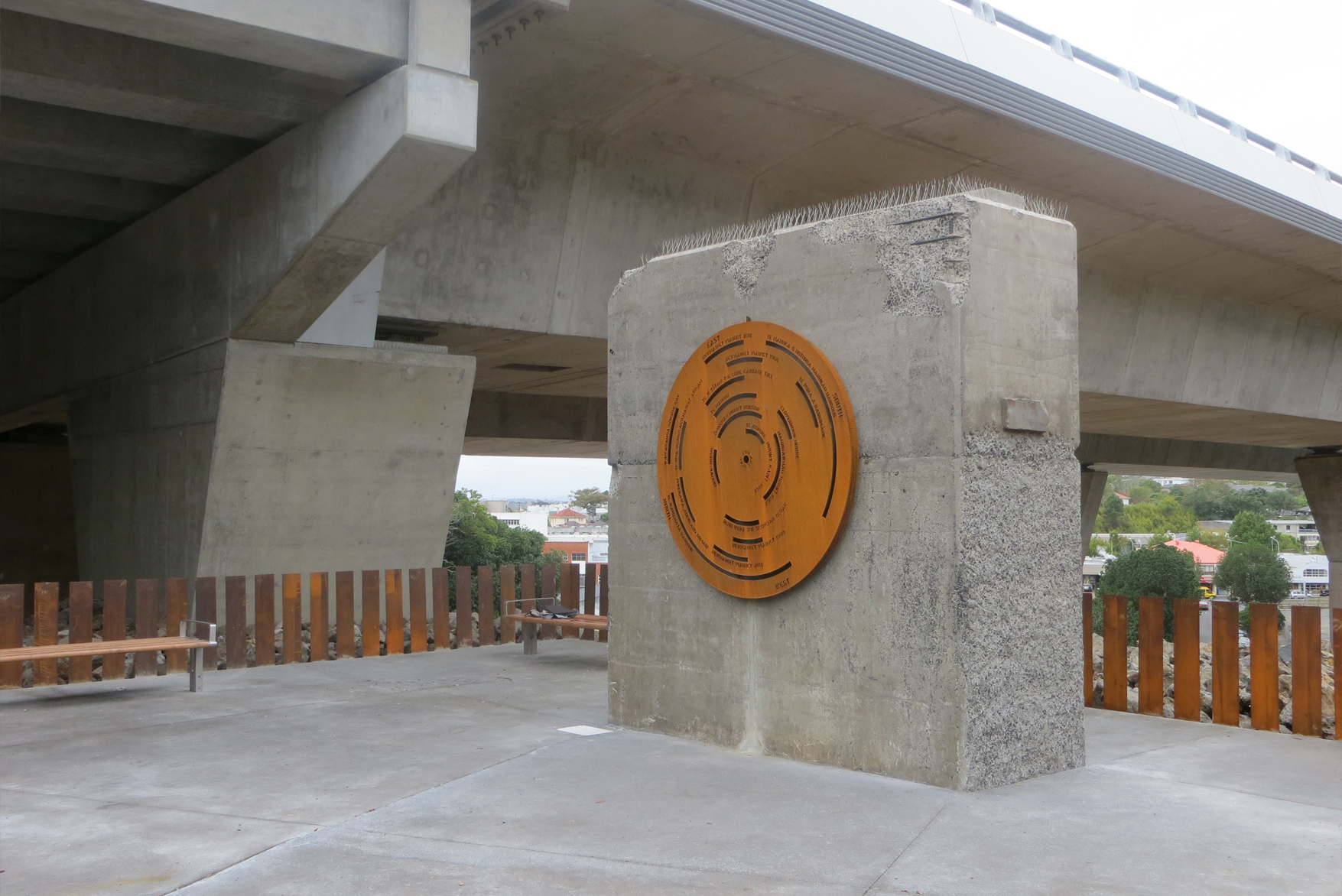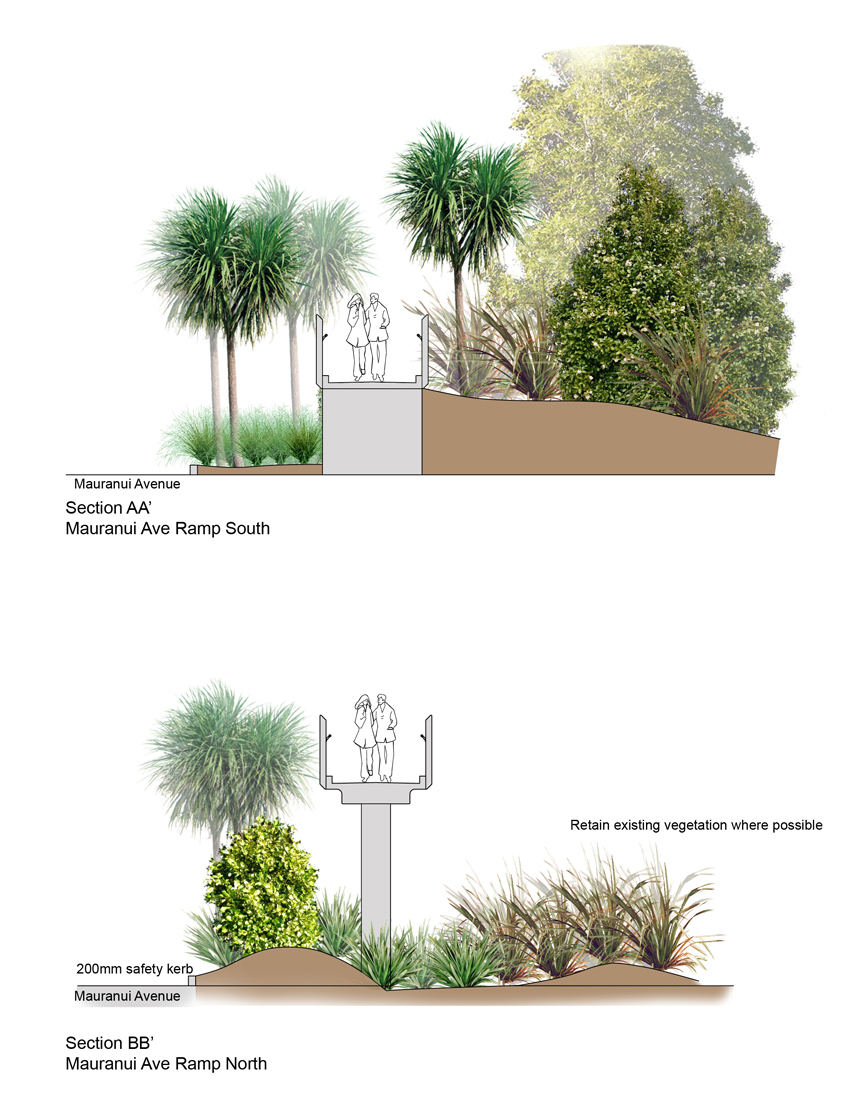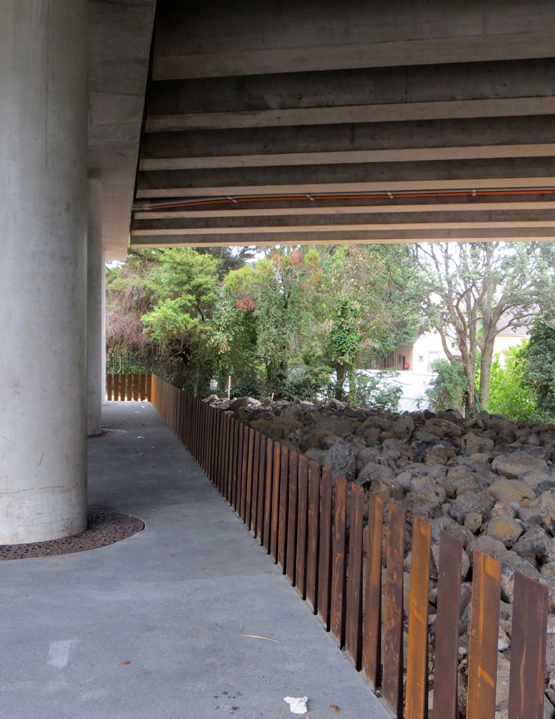The landscape and urban design concept drew from the wider landscape, cultural values, history and geology on a broad scale, and from local movements, character and sites of cultural importance at specific site locations. Through consultation with Iwi, Auckland Council and NGA Newmarket’s design team, a number of these concept ideas were brought through to inform the design and the surrounding urban landscape.
The Newmarket Viaduct Landscape and Urban Design Framework was produced in 2008 and guided the development of the landscape and urban design outcomes throughout the life of the project. High level design principles were captured to provide guidance into the master planning and design resolution, and through to construction.
The project was split into six design developments which were reviewed against the Framework.
They are:
- The Viaduct Structure: The new viaduct’s modern sleek design enhanced the built quality of Newmarket and the city. The bulk of the structure was reduced through the reduction of piers and minimising of the edge barrier treatment to maintain and maximise views. Services were contained within the superstructure and piers resulting in an uncluttered undercroft.
- Mt Hobson Road Noise Wall: This permanent solution provides noise attenuation to Mt Hobson Rd and adjacent properties. Durable planting retains the green vegetated outlook for residents, deters tagging and avoids the need for anti-graffiti coating. It builds on the geometric pattern used in the Gillies Ave wall.
- Dilworth Footbridge: This involved creation of a landmark pedestrian bridge with a strong form and identity. There are universal access ramps at both ends of bridge, and the footbridge length was increased to enable the addition of a third railway track in the future. Additionally, the footbridge height was increased to eliminate the risk of strikes from over height vehicles.
- Gillies Avenue, Ruarangi's Terrace and Clovernook Road: Improved amenity for pedestrians was achieved with a widened footpath, viewing platform, seating and lighting. The cultural landscape is expressed through a corten steel interpretation disc, and the surrounding volcanic landscape referenced through the use of site-won basalt rock. The ground stability of Ruarangi’s Terrace has been improved for any future development, and there is allowance for a future pedestrian link to Clovernook Road.
- Gillies Avenue Off-Ramp: The remu-wera patterned retaining wall references the surrounding area and the basalt aggregate builds on the volcanic theme. An additional timber wall was installed along the northern boundary and additional strip of planting along the off-ramp edge.
- St Marks Road On-Ramp: Extensive consultation was undertaken with Remuera Rackets Club, local residents, and Hobson Community Board. The solid concrete barrier reduces on-ramp noise. Scoria, field plants, pohutukawa, cabbage trees, flax and native grasses, all reference the relationship to Mt Hobson and the natural heritage of the area.
To meet its myriad challenges New Zealand Transport Agency (NZTA, now Waka Kotahi) selected a second generation of the Northern Gateway Alliance that had successfully delivered the Northern Gateway Toll Road project at Waiwera, north of Auckland.
Construction commenced in November 2008 and was completed on programme in December 2012. Opening the new southbound viaduct in September 2010 and new northbound viaduct in January 2012 meant implementing two 36-hour shut-downs having the potential to gridlock Auckland.
Instead, excellent planning and traffic management, outstanding communication and unprecedented community collaboration, combined to complete both Southbound and Northbound Switches 18 hours ahead of schedule without major incident, public complaint or congestion on Auckland’s major road network – outstanding results achieved by NGA Newmarket for the client and the city.
